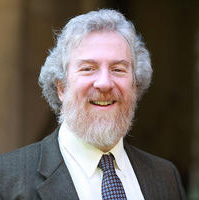Israel: Memory and Dreams (Part 2)

Following the transition from the pain-filled memories of Yom Hazikkaron (State of Israel Memorial Day) to Yom Ha’atzma’ut (State of Israel Independence Day), it is fitting to look closely at the prayer recited in so many synagogues (of all denominations) around the world: Tefillah l’Shalom HaMedinah (the Prayer for the State of Israel). There is a “legend” that the text was composed by Israeli Nobel laureate Shmuel Yosef Agnon, but in fact the text was composed by Israel’s Chief Rabbi Yitzhak HaLevi Herzog (1936–1949), and a critically important phrase was added by Agnon in a handwritten note.
The prayer begins with the phrase, “Avinu shebashamayim . . . barekh et medinat Yisrael” (Our Father in Heaven bless the State of Israel) [Sidddur Sim Shalom Shabbat and Festivals, 149]. It is worth noting that the text does not ask for blessing upon Eretz Yisra’el (the Land of Israel), a concept well founded in biblical and rabbinic sources, but upon a concept born out of modernity, Medinat Yisra’el (the State of Israel). A state is not a phenomenon of nature, it has no specific location; it is a human construct, rooted in the idea of law—the word medinah is derived from the Hebrew din (law). Later, the prayer asks the blessing of peace for the Land and all its inhabitants. The phrase added by Agnon now makes its appearance, describing the State of Israel as “reishit tsemihat ge’ulateinu”(the beginning of the flowering of our Redemption). This is an extraordinary and, ultimately, messianic claim that lifts the establishment of Israel from the arena of politics into ultimate spiritual Redemption. The phrase “flowering of our Redemption” is based upon the metaphor of Isaiah (11:1) that speaks of a “flowering of the shoot of Jesse,” and that heralds the dawning of the Messianic Era.
The claim is made and affirmed each week that the very establishment and existence of the State of Israel is a step toward the perfection of humanity and the world. As the history of Israel and the world unfolds, we see (with perhaps some sadness) that the hour of Redemption remains further away than might have been hoped for in 1948, and some congregations have inserted an additional word so that prayer reads “Bless the State of Israel, shet’hei (that it might become) the beginning of the flowering of our Redemption” (Mahzor Lev Shalem: Rosh Hashanah and Yom Kippur, 117).
So may it be that the People, Land, and State of Israel come to embody and bring to reality the vision of the Prophets and the founders of the State, and that, in the future, it will be manifest to all that in Israel is the seed of peace and Redemption for all the world, tikkun ‘olam.



